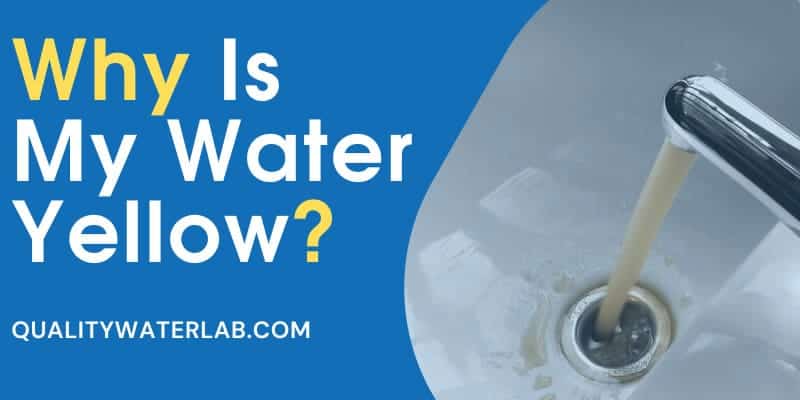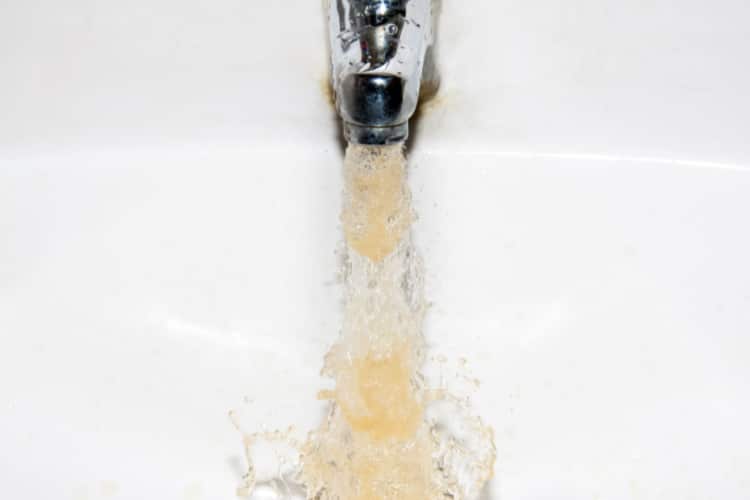Water Coming Out Yellow

Discovering discolored water in your home can be alarming. While various hues can signal different underlying issues, yellow water is a common concern that homeowners often encounter. This article focuses specifically on yellow water emanating from your HVAC system, exploring potential causes, troubleshooting steps, and preventative measures to ensure your system operates efficiently and delivers clean, clear water.
Understanding Yellow Water from Your HVAC System
The appearance of yellow water isn't always a crisis, but it shouldn't be ignored. The color often indicates the presence of rust, sediment, or tannins in your water supply or within the HVAC system itself. Identifying the source is the first step toward resolving the problem.
Common Causes of Yellow Water:
- Rust and Corrosion: This is the most frequent culprit. Older pipes, especially those made of iron or steel, are prone to rust. As water flows through these pipes, it picks up rust particles, resulting in a yellow or reddish-brown discoloration.
- Sediment Buildup: Over time, sediment like dirt, sand, and minerals can accumulate in water heaters and pipes. This sediment can leach into the water, causing discoloration.
- Tannins: Tannins are organic compounds that naturally occur in decaying vegetation. If your water source is a well near wooded areas, tannins can seep into the water supply, giving it a yellow or tea-like color.
- Water Heater Issues: A failing water heater anode rod, designed to protect the tank from corrosion, can contribute to rust formation and discolored water.
- New Plumbing: Occasionally, newly installed plumbing can release residual oils or compounds used during manufacturing, causing temporary discoloration.
Troubleshooting Yellow Water: A Step-by-Step Guide
Before calling a plumber or HVAC technician, you can perform some basic troubleshooting steps to pinpoint the source of the yellow water.
- Identify the Source: Determine if the yellow water is coming from all faucets in your home or only specific ones. If it's only from certain faucets, the problem is likely localized to the pipes serving those fixtures.
- Check Hot vs. Cold Water: Run both hot and cold water separately. If the yellow discoloration is only present in the hot water, the problem is likely within the water heater. If it's present in both, the issue is probably in the main water line.
- Flush the Water Heater: If the problem seems to be the water heater, flush the tank to remove sediment buildup. This can often improve water clarity. Consult your water heater's manual for instructions on how to properly flush the tank. Regular flushing, typically annually, is recommended for maintaining optimal water heater performance.
- Inspect Pipes: Visually inspect exposed pipes for signs of rust or corrosion. If you find any, consider replacing those sections of pipe.
- Test Your Water: If you suspect tannins or other water quality issues, have your water tested by a certified laboratory. This will provide a comprehensive analysis of your water's composition and identify any contaminants.
Addressing Yellow Water: Solutions and Prevention
Once you've identified the cause of the yellow water, you can take steps to address the problem and prevent it from recurring.
Solutions:
- Pipe Replacement: If the problem is widespread pipe corrosion, consider replacing old iron or steel pipes with copper or PEX (cross-linked polyethylene) pipes. Copper is more resistant to corrosion, while PEX is a flexible and durable option that's also less prone to freezing.
- Water Heater Repair or Replacement: If the water heater is the source of the problem, repair or replace the anode rod. If the water heater is old or severely corroded, replacement may be the most cost-effective solution. Look for models with good energy efficiency ratings, such as those with high Energy Factor (EF) ratings.
- Water Filtration System: Installing a whole-house water filtration system can remove sediment, rust, and other contaminants from your water supply. There are various types of filters available, including sediment filters, carbon filters, and reverse osmosis systems.
- Water Softener: If you have hard water, a water softener can help prevent mineral buildup in pipes and appliances, which can contribute to discoloration.
- Tannin Filter: If tannins are the issue, a specialized tannin filter can remove these organic compounds from your water.
Prevention:
- Regular Water Heater Maintenance: Flush your water heater annually to remove sediment buildup. Replace the anode rod as needed, typically every few years.
- Monitor Water Quality: Periodically test your water, especially if you have a well or live in an area with known water quality issues.
- Upgrade Plumbing: As pipes age, consider proactively replacing them with more durable materials.
HVAC Systems and Water Quality: A Deeper Dive
While the focus here is on yellow water, it's essential to understand how your entire HVAC system can influence water quality. Systems like evaporative coolers (swamp coolers) and humidifiers utilize water, and any contamination in that water can affect the air quality in your home. Therefore, maintaining clean water sources is crucial for both water and air quality.
For example, evaporative coolers rely on evaporation to cool the air. If the water used in the cooler is contaminated, the contaminants can be released into the air along with the moisture. Similarly, humidifiers can harbor bacteria and mold if not properly maintained, which can then be dispersed into the air. Regular cleaning and maintenance of these systems are vital to prevent these issues.
The Role of AFUE, SEER, and HSPF Ratings
When upgrading your HVAC system, understanding ratings like AFUE (Annual Fuel Utilization Efficiency), SEER (Seasonal Energy Efficiency Ratio), and HSPF (Heating Seasonal Performance Factor) is crucial. These ratings indicate the efficiency of your heating and cooling systems, respectively. While they don't directly relate to water quality, they reflect the overall performance and energy consumption of your system, which can indirectly impact water usage (for example, a more efficient cooling system might require less water for evaporative cooling). Always choose systems with high ratings to minimize energy costs and environmental impact. For example, look for furnaces with AFUE ratings of 90% or higher and air conditioners with SEER ratings of 15 or higher.
Warranty Considerations
HVAC systems and water heaters typically come with warranties that cover defects in materials and workmanship. It's essential to understand the terms and conditions of your warranty, including what is covered and what is not. Some warranties may be voided if the system is not properly maintained or if non-approved parts are used. Keep records of all maintenance and repairs to ensure your warranty remains valid. For example, a typical water heater warranty might cover the tank for 6-10 years and the parts for 1-5 years.
Cost Considerations
The cost of addressing yellow water can vary depending on the cause and the solution. Replacing pipes can be expensive, especially if extensive work is required. Water filtration systems can range from a few hundred dollars to several thousand, depending on the type and size of the system. Water heater replacement can also be a significant expense. Obtain quotes from multiple contractors to compare prices and ensure you're getting the best value. Also, consider the long-term cost savings of energy-efficient upgrades. While the initial investment may be higher, lower energy bills can offset the cost over time.
Popular HVAC Brands and Models
Several reputable HVAC brands offer high-quality systems with excellent warranties and performance. Here are a few examples:
- Carrier: Known for their innovative technology and energy-efficient systems. Models like the Carrier Infinity series offer advanced features and smart controls.
- Trane: A trusted brand with a long history of reliability and durability. The Trane XV20i is a popular high-efficiency air conditioner.
- Lennox: Offers a wide range of HVAC systems, including highly efficient furnaces and air conditioners. The Lennox SLP98DF furnace is known for its ultra-low emissions.
- Rheem: A popular brand for water heaters, offering a variety of models with different features and price points. The Rheem Prestige series features high-efficiency and smart home integration.
- American Standard: Similar to Trane, offering reliable and durable HVAC equipment.
Conclusion
Yellow water emanating from your HVAC system or plumbing is a common problem that can often be resolved with proper diagnosis and treatment. By understanding the potential causes, troubleshooting steps, and available solutions, you can take proactive steps to ensure your water is clean and clear. Remember to prioritize regular maintenance, monitor water quality, and choose energy-efficient HVAC systems to maintain a healthy and comfortable home environment. When in doubt, consult with a qualified plumber or HVAC technician for professional assistance.










